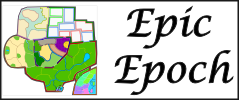Here is the lengthy response that I promised to
natty_dread's post in this topic on the 17th:
Forgive me for taking out your blank lines, but this post is getting huge...
natty_dread wrote:How's this? It was difficult to accomplish, and I had to make some compromises, but I managed to move them away from the shadows somewhat. It's hard because they need to be close enough to the atoms so you can tell which name belongs to which atom...
Rearranged the legend a bit, so it should fit better now. Some continent names rearranged as well.
Now that I think of it, this update is actually nothing but a big rearrangement... it shouldn't even have a whole new version number! Oh well, what's done is done...
- Click image to enlarge.

I haven't checked, but did you move any atoms (meaning I need to fix the XML coordinates), or just labels?
natty_dread wrote:oh, btw, about the idea of bombardment between amide nitrogens, I'll probably discard that idea. Now that I've thought of it, it would seem out of place, just a gimmick that was glued on the map for no other purpose than to have a gimmick on the gameplay.
Fair enough, I never put that in, so no change to the XML, there.
natty_dread wrote:btw2: with the starting positions & neutrals, the starting territories would go as follows:
(54 territories, out of which 5 blue nitrogens (neutral) and 8 oxygens (starting pos.) = 41 normal territories)
2 players: 13 normal territories each, 15 neutral normal territories, 4 oxygens each, 5 neutral blue nitrogens = 20 neutrals, 17 territories each
3 players: 13 normal territories each, 2 neutral normal territories, 2 oxygens each, 2 neutral oxygens, 5 neutral blue n:s = 9 neutrals, 15 territories each
4 players: 10 normal territories each, 1 neutral normal territory, 2 oxygens each, 5 neutral blue n:s = 6 neutrals, 12 territories each
5 players: 8 normal territories each, 1 neutral normal, 1 oxygen each, 3 neutral oxygens, 5 neutral blue n:s = 9 neutrals, 9 territories each
6 players: 6 normal territories each, 5 neutral normals, 1 oxygen each, 2 neutral oxygens, 5 neutral blues = 12 neutrals, 7 territories each
7 players: 5 normal territories each, 6 neutral normals, 1 oxygen each, 1 neutral oxygen, 5 neutral blues = 12 neutrals, 6 territories each
8 players: 5 normal territories each, 1 neutral normal, 1 oxygen each, 5 neutral blues = 6 neutrals, 6 territories each
How's that?
Well, with the XML as it is, I don't think that is what you get, but that doesn't mean it can't be done. There has been much discussion of how these things work in places like
XML Starting Positions. Here is a particularly succinct and pertinent
post from that thread:
MrBenn wrote:My understanding of how the start positions work is as follows:
- Each <position> can contain single or multiple territories.
- The <position> groups are divided equally amongst the players, with each player getting all of the territories in the <position(s)> they have been allocated. Any remaining territories in left-over <position> tags are divided equally (with 1/3 neutral in 2-player games).
- Territories in <position> tags can be dealt to players even when the underlying territory has a <neutral> tag
- Any territories not in <position> tags, and that do not have <neutral> starts, are divided equally amongst players (with 1/3 neutral in 2-player games)
- If there are more players than starting positions, the <position> tags are ignored
- It is not possible to specify which player will get which <position>
- It is not possible to specify a <position> that will be dealt out in every game
- It is not possible to limit the number of positions to the number of players (ie. the game engine will distribute 8 positions evenly amongst 4 players, rather than allocate 1 each and have 4 positions starting neutral)
and
another, pointing out that the neutral "player" in a 1v1 does not get a share of the starting positions:
yeti_c wrote:MrBenn wrote:yeti_c wrote:Note - Starting positions are equally distributed in 1v1 (no neutral player).
So with 5 starting positions in a 1v1, 2 each would be allocated to players, with the third being added to the pot for distribution unless it was a designated neutral.
I think I've got it now

Correct.
C.
For further confirmation of my understanding of the way things work, I
posted a question to that same topic and got
an answer from thenobodies80 which agrees with yeti_c.
I have not coded the oxygens as neutrals, so any leftovers after the distribution of starting positions go back in the pot for random distribution.
So, with the current XML, I think the starting territories would go as follows:
54 territories, out of which 5 blue nitrogens are neutral, meaning 49 territories to divide, but with 8 starting positions consisting of 1 oxygen territory each, leaving 41 "free-range" territories.
2 players: 4 starting positions each, 41 / 3 = 13 normal territories for each player, and 2 leftovers added to the 13 for the "neutral player" and the 5 neutral blue nitrogens = 20 neutrals, 17 territories each real player.
3 players: 2 starting positions each, plus (41 + 2 unused starts) / 3 = 14 more territories each, leaving 1 leftover to add to the 5 neutral blue nitrogens = 6 neutrals, 16 territories each.
4 players: 2 starting positions each, plus 41 / 4 = 10 more territories each, leaving 1 leftover to add to the 5 neutral blue nitrogens = 6 neutrals, 12 territories each
5 players: 1 starting position each, plus (41 + 3 unused starts) / 5 = 8 more territories each, leaving 4 leftovers to add to the 5 neutral blue nitrogens = 9 neutrals, 9 territories each
6 players: 1 starting position each, (41 + 2 unused starts) / 6 = 7 more territories each, leaving 1 leftover to add to the 5 neutral blue nitrogens = 6 neutrals, 8 territories each
7 players: 1 starting position each, (41 + 1 unused starts) / 7 = 6 more territories each, leaving 0 leftovers to add to the 5 neutral blue nitrogens = 5 neutrals, 7 territories each
8 players: 1 starting position each, 41 / 8 = 5 more territories each, leaving 1 leftover to add to the 5 neutral blue nitrogens = 6 neutrals, 6 territories each
Note the following as far as where those leftover starts go:
- 3 players: 2 time in 43, 1 goes neutral, while the other goes to one of the players who is given a three to two to two advantage in oxygens over the other two players. 41 times in 43, neither is neutral. In those cases, one third of the time one player gets both for a four to two to two advantage, and two thirds of the time are split, giving a three to three to two situation.
- 7 players: The extra oxygen always goes to some lucky player.
- 5 players: This case is fairly complicated.
- We have 41 free-range territories and 3 unused starts to split 5 ways, leaving 4 neutrals.
- There are a total of 135751 ways to pick the 4 out of the 44.
- If all 3 unused starts are picked to be neutral, there are 41 ways to pick the fourth neutral, so in 41 out of 135751 or 1 out of 3311 drops (~= 0.0302%), no one gets an extra oxygen. In this small number of cases, everything stays fair.
- There are 3 ways to pick 2 unused starts and 820 ways to pick 2 others, so that makes 2460 out of 135751 or 60 out of 3311 drops (~= 1.812%) in which one extra oxygen gets handed to a player.
- There are 3 ways to pick 1 unused starts and 10660 ways to pick 3 others, so that makes 31980 of 135751 or 780 out of 3311 drops (~=23.558%) in which two extra oxygens go into the pot for the players. There is then a 1 in 5 chance of them both going to one player, and obviously a 4 in 5 chance of them being split. That means 156 out of 3311 drops (~= 4.712%) give a two oxygen advantage to one player and 624 out of 3311 drops (~= 18.846%) where two players get one extra oxygen each.
- Finally there are 101270 of 135751 or 2470 out of 3311 drops (~= 74.600%) where all three unused starts go into the pot. There are 125 different ways they can be distributed to the five players: 5 where they all go to one player, 60 where they are split two to one player and one to another, and 60 where they are spread among three different players. So 5 out of 125 times or 4% of the time when three are in the pot or in roughly 2.984% of the drops, one lucky player gets three extra oxygens (and consequently a starting bonus of two), while 60 out of 125 times or 48% of the time when three are in the pot or in roughly 35.808% of the drops either: a) one player gets two extra oxygens and another gets one (no bonus for anyone , or b) three players get one each (again no bonus).
I had this mostly figured out before the idea of the nitrogen connectors came up. If that is accepted, I can rework this whole shebang. We may also want to look at what happens if the starting position oxygens are coded to be neutrals when they are left over (so they never go unevenly to players).

























































































